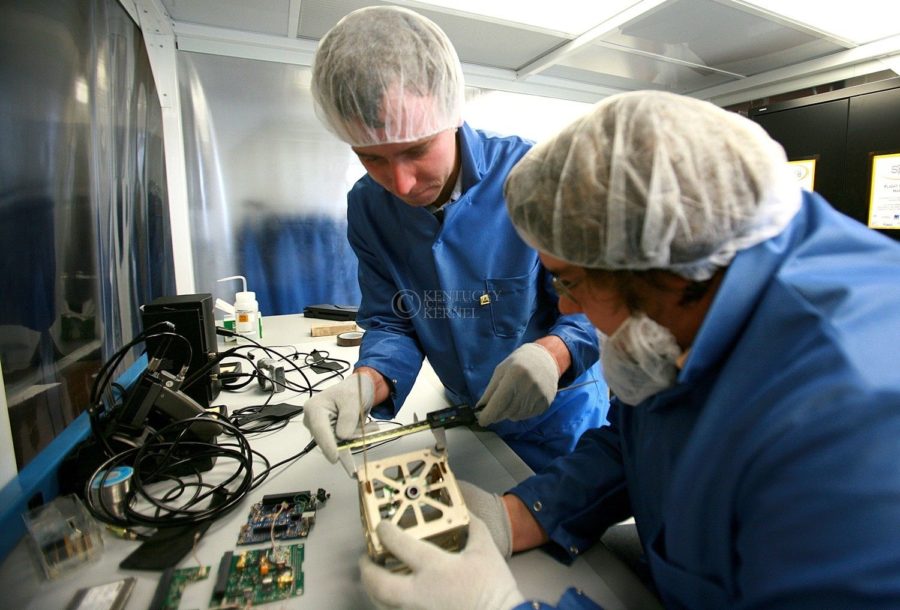The final frontier: UK group makes Commonwealth’s first venture into space
April 13, 2010
Many UK fans watched in agony as the Cats battled West Virginia March 27 in the NCAA tournament, but another UK team battled its way into a different arena — space.
On March 27 UK helped launch Frontier 1, a rocket built entirely in Kentucky, into low orbit 167 miles above Earth’s surface. Frontier 1 served as UK and Kentucky’s first venture into space.
Most UK students do not even know UK has a space program, said James Lumpp, associate professor and director of the UK Space Systems Laboratory.
The Space Systems Laboratory was created in 2006 as part of Kentucky Space — a group of universities focused on development of technology for use in space. The UK SSL serves as the engineering arm of Kentucky Space, Lumpp said.
Lumpp said his experience as a pilot and an engineer partnered with his enthusiasm for space was a perfect combination for the program at UK. The lab has 10 members, from freshmen to graduate students.
“I don’t think most people know what goes on here,” Lumpp said. “I doubt that there’s another university in the U.S. or in the world that has as many missions going on as we do here.”
The UK SSL has undertaken several successful missions so far, from creating high-altitude balloons to low-orbit rockets like the Frontier 1, to creating a piece of equipment for the international space station.
“Maybe it’s a nerdy thing, but getting to space is really hard,” said Twyman Clements, a graduate student with the SSL. “You have to go to mach 25.”
Mach 25 is about 17,000 miles per hour, or five miles per second, and it is how fast a shuttle was going on April 5, 2010 when it helped carry another of the UK SSL’s creations, the NanoRack, to the international space station.
Nanoracks LLC, a company looking to commercialize space production, approached Kentucky Space to help create a modular, standardized way to perform experiments in small spaces on the space station, Clements said.
The UK SSL helped develop a compartmental system for running experiments on the International Space Station, Clements said. The equipment was entirely manufactured at UK and is currently in use on the station.
“It’s something I never thought I’d be doing,” Clements said. “To have the stuff you make even considered to be taken up there is cool.”
Daniel Erb, student director of the SSL, said the feeling was indescribable.
“It’s very fulfilling to have finally made it,” Erb said. “A few weeks ago, we had nothing. Now, we have two different things, and one is a permanent fixture in the space station.”
Later this year, UK will set another first, as it and two other schools take part in the first launching of student-built satellites by NASA.
The SSL has been designing and manufacturing one of the first student satellites, named KY Sat 1, to be sent into space in November.
Lumpp said the satellite was designed mostly for educational purposes and would include a high-powered transmitter and camera, allowing people to interact with it in different ways.
































































































































































